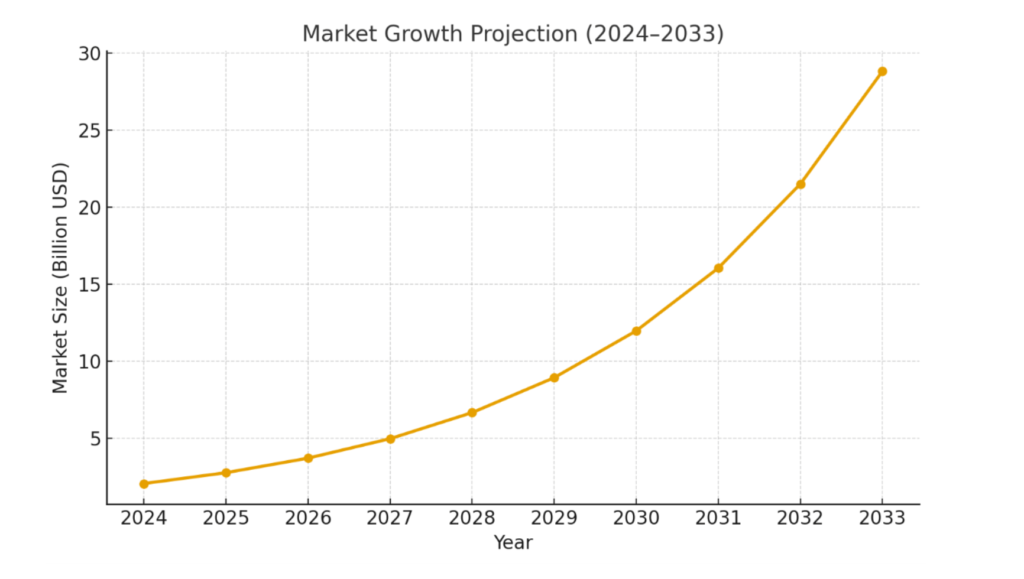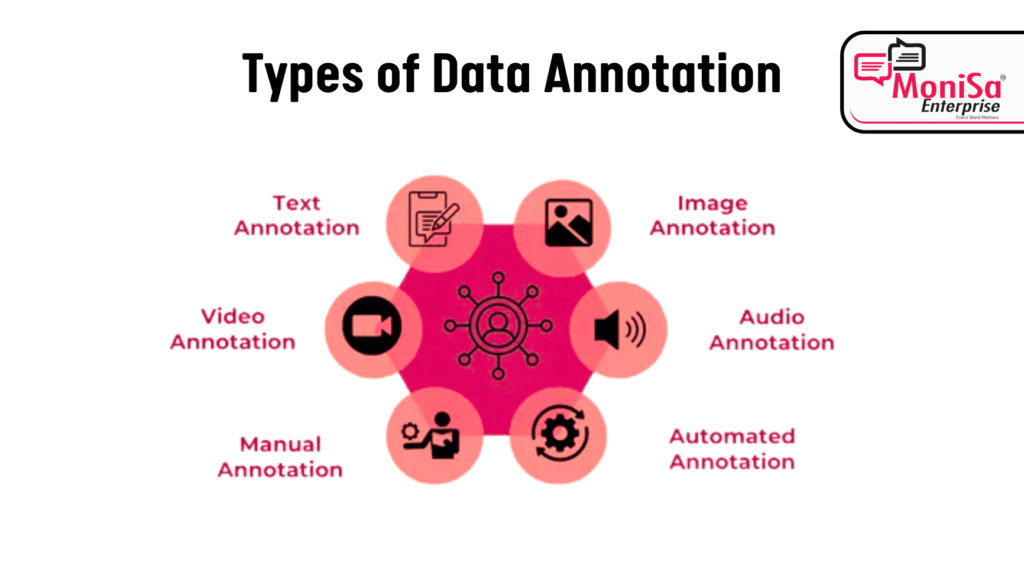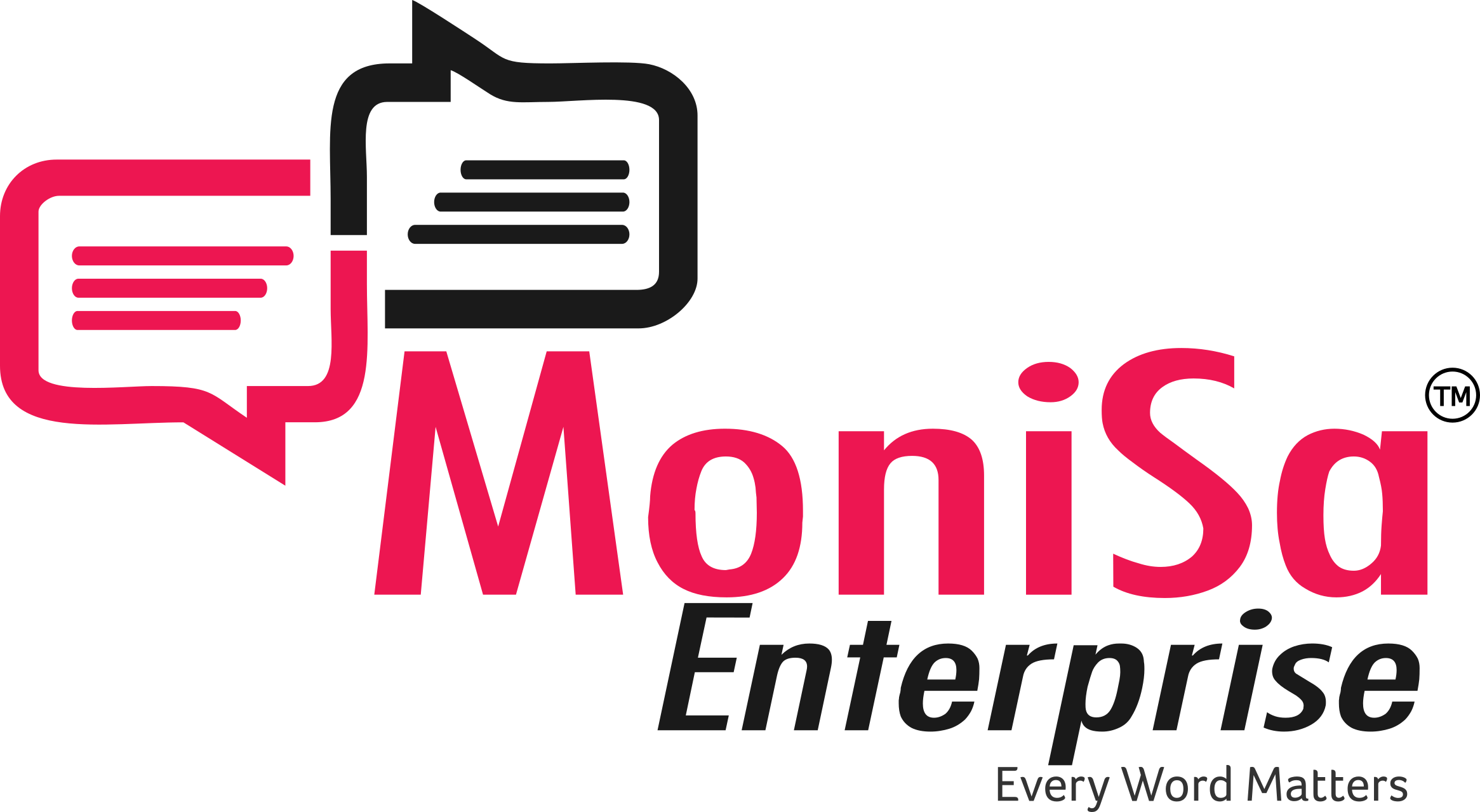Whenever you get extremely relatable content on your social media platforms, you are seeing Machine Learning (ML) and Artificial Intelligence (AI) in action, powered by data annotation. This hidden process is not an easy task.
The accuracy of AI models and algorithms shows the growing market for global data annotation and labelling. From $ 2.07 billion in 2024 to nearly $ 29.6 billion by 2033, it is expected to expand at a 34% CAGR (Compound Annual Growth Rate).
Companies also invest heavily in annotation tools, with an estimated value of 2.1 billion USD in 2024. That makes it clear; machine learning and AI are on the way to evolve more in the future, transforming how we use data annotation and the intensity of its impact.

What is Data Annotation?
Table Of Contents
- 1 What is Data Annotation?
- 2 Types of data that need annotation
- 3 Data Annotation Techniques
- 4 Data Annotation Best Practices
- 5 Why is Data Annotation crucial for AI & Machine Learning?
- 6 Industries that need Data Annotation
- 7 Challenges of Data Annotation in Machine Learning & AI
- 8 How to Outsource Data Annotation?
Data annotation is the process of creating reliable and extremely accurate machine learning models with the help of labeling and various annotation techniques. This is done by converting raw inputs – images, video, and audio either manually or with synthetic means. It gives structure and context to a machine learning model. An AI model needs annotated data to generate content, text, images, and even predictions.
Data annotation is the process of converting raw data inputs into meaningful content to train AI models and facilitate machine learning. AI models need to understand the information before they can process the context and make their decisions or predictions, based on which the system works. To make this system function as if predictions are made naturally, it needs to first understand information. Data annotation and labelling help us to do exactly that.
This process begins with labelling raw data in the format of text, image, audio, or video. It is picked up for machine interpretation, which in turn processes the information to provide desired results.
Growing children learn new words and pick up on etiquette and habits. Training a machine with annotation is almost a similar process; the AI picks up on the data it has been exposed to, which helps it identify and make its decisions.
Types of data that need annotation
A) Text Data: Labelling for intent, sentiment, and syntax.
B) Audio Data: Audio content is segmented after transcribing to identify its emotion.
C) Image Data: Labelling images using boxes or polygons to recognise faces, regions, objects, and even emotions.
D) Video Data: Different frames of the videos are annotated like an image to detect and track objects that are in motion.
E) Sensors: LiDAR, radar, and 3D objects.
Given the need for data annotators recently, even with the use of automation, 75% of all data labeling is still done by human annotators.
Data Annotation Techniques
To match a specific type of business domain, an AI model must meet standards or data annotation requirements.
The most basic form of recognising entraining for machines and AI models is via text. Text annotation makes up a large part of natural language comprehension for AI.
A) Semantic Annotation: The process of adding metadata to content for better search engine performance.
B) Intent Annotation: People search the Internet for 3 reasons: to Learn, purchase, or complain. To give them results accordingly, this system needs to recognise the purpose of their search, which is understood through intent annotation.
C) Sentiment Analysis: The sentiment of people needs to be labelled as per the phrases belonging to those particular sentiments. These are categorised and stored in the AI model memory.
D) NER (Name Entity Recognition): It identifies nouns, proper nouns, medical terms, and financial codes.
AI models can identify organised static visual data using image annotation.
A) Semantic Segmentation: With multiple objects overlapping each other, the semantic segmentation technique isolates pixels and differentiates them from the background objects.
B) Instance Segmentation: This system uses instance segmentation when multiple objects that overlap each other are also of similar types, for example, multiple cars in the same image.
C) Polygon: An irregular shape can be labelled with the help of a polygon.
D) Bounding Box: The basic and most widely used form of object detection using boxes of varying shapes.
E) Keypoint Annotation: To recognise body gestures and pose.

We need better and more precise processing for video annotation because of its complexity:
A) Object tracking: To track similar moving objects across frames, like a car on a road.
B) Frame-by-frame labelling: Using the image annotation methods, but on each frame to understand the transformation of an object through the frames.
C) Temporal segmentation: It splits a video into multiple segments before performing annotation.
D) Event annotation: When the video has a specific predefined objective, like the video of a bus accident. The system will annotate and identify only objects related to this theme.
Every system has specific requirements that help us reduce the data processing time and improve the accuracy of its output. Using the correct AI model and technique, it is possible to achieve high reliability on the data & its models.
Data Annotation Best Practices
When companies don’t have the right vendors or the right annotation resources, they end up wasting a lot of time and their budget. With the best practices of data annotation, some vendors can achieve the desired results that you need to match your brand goals.
A) Trust domain experts: Every organization needs a domain expert because they are aware of compliance rules and regulations.
B) Establish clear guidelines: With a proper standard or guidelines set, it is easy for annotators to misinterpret information and give the best possible result by following the exact instructions.
C) Multilayer quality analysis: The data annotation process needs a proper quality analysis method for every stage, with scoring, reassessment, and validation of annotated data. It is the best way to avoid rework and errors.
D) Use automation strategically: Artificial intelligence and machine learning use automation for repetitive tasks with some human assistance.
E) Security and compliance: HIPAA, GDPR, and SOC2 standards are a must for data security. Companies trust us more when we follow these security protocols.
The more the data errors, the lower the AI performance with inaccuracy in output. MIT Sloan has found that it can affect AI performance by up to 30%.
Why is Data Annotation crucial for AI & Machine Learning?
When the data is unprocessed or inaccurately processed, AI models cannot understand it and link it with the proper context. Data annotators act as the link between AI models, machine learning, and human comprehension. They are converting the raw, unprocessed data from random information to related context that a model can use for precise predictions.
Model Accuracy
How well a model can predict depends on the quality of data annotation. We can get positive results only if all the results and biases that this system produces are classified and reworked.
Domain Specific Application
Every domain has a different standard and a different meaning. Hence, the same data annotated cannot work across the varied industries. Healthcare, financial, legal, and Heavy Industries are the most tricky. An AI model can reach industry readiness only with the help of domain-specific annotations.
Learning at Scale
When a human works with machine learning and AI models, they are using the data to train them with labelled input-output pairs. This helps the model to learn at a scale with reference points, distinguishing between different types of data while recognising that the input affects the output.
Human-Assisted Systems
When a human operator reviews model predictions and provides proper feedback, the system performs better. AI can learn from its previous mistakes and improve by learning from real-world situations.
Industries that need Data Annotation
Healthcare
AI systems are now widely used to detect diseases at their early stages with integrated annotation systems. For example, an IBM Watson system uses radiologist-labelled datasets for precise diagnosis.
Finance
Security hacks and fraud detection are easy with an automated risk evaluation. Banks and financial institutions, finance-related officials, can support regulatory requirements through machine learning systems that have used annotated documents.
Agricultural
Multiple environmental factors are used to improve women’s performance in our agricultural performance with advanced AI models. They use soil analysis, environmental climate analysis, and drone imagery.
Commercial
Retail and e-commerce are expanding faster than the linguistic market. Organisations now find it easy to improve search accuracy with catalogue labelling and techniques of sentiment annotation. They can also provide personalized solutions to customers.
Challenges of Data Annotation in Machine Learning & AI
Although data annotation can achieve great success in any industry with the right annotators, it comes with its own set of challenges.
A) Expensive: Hiring an in-house data annotator who goes through the process of annotating, scoring, performing quality analysis, and reprogramming the AI model is expensive. By outsourcing annotation services, companies cut costs by 40% with better service quality.
B) Time-consuming: Big projects naturally need a longer duration to complete, which can be time-consuming for an in-house team. They are not trained to handle millions of data points.
C) Data Security: It is not safe to trust a resource without confirming the quality of an annotator or the team of annotators. An organization can even face legal penalties if found working with workflows that aren’t secure. Highly sensitive information needs to be taken care of by highly professional teams.
D) Lack of Resources: Every annotator has their unique way of interpreting data. Human subjectivity can decrease the performance of a model. Organizations need strict guidelines that annotators can follow. Both reliable guidelines and good annotators are hard to find.
How to Outsource Data Annotation?
We have already discussed the disadvantages of having to hire in-house annotators. Given the challenges, a company can cut down 30% to 40% of its expenses when outsourcing. They need a partner with proven expertise in the field of data annotation.
MoniSa Enterprise has a large team of linguistic experts and data annotators who have been picked from one of the best and are undergoing training and experience in their specific domain expertise.
If you want your AI model to perform at its full potential, you need to start by strengthening it at its core. Get in touch with us for a free consultation today.


